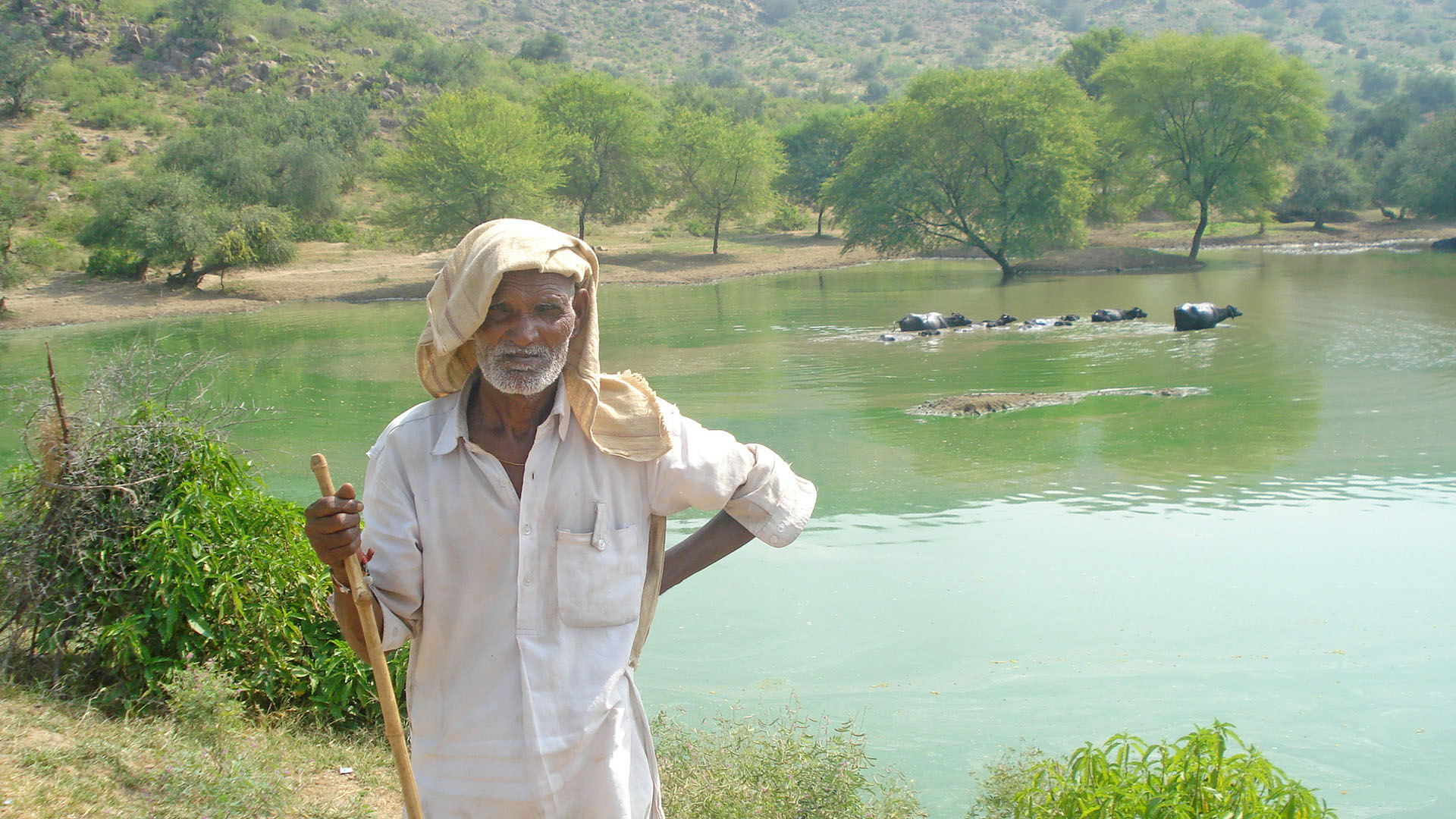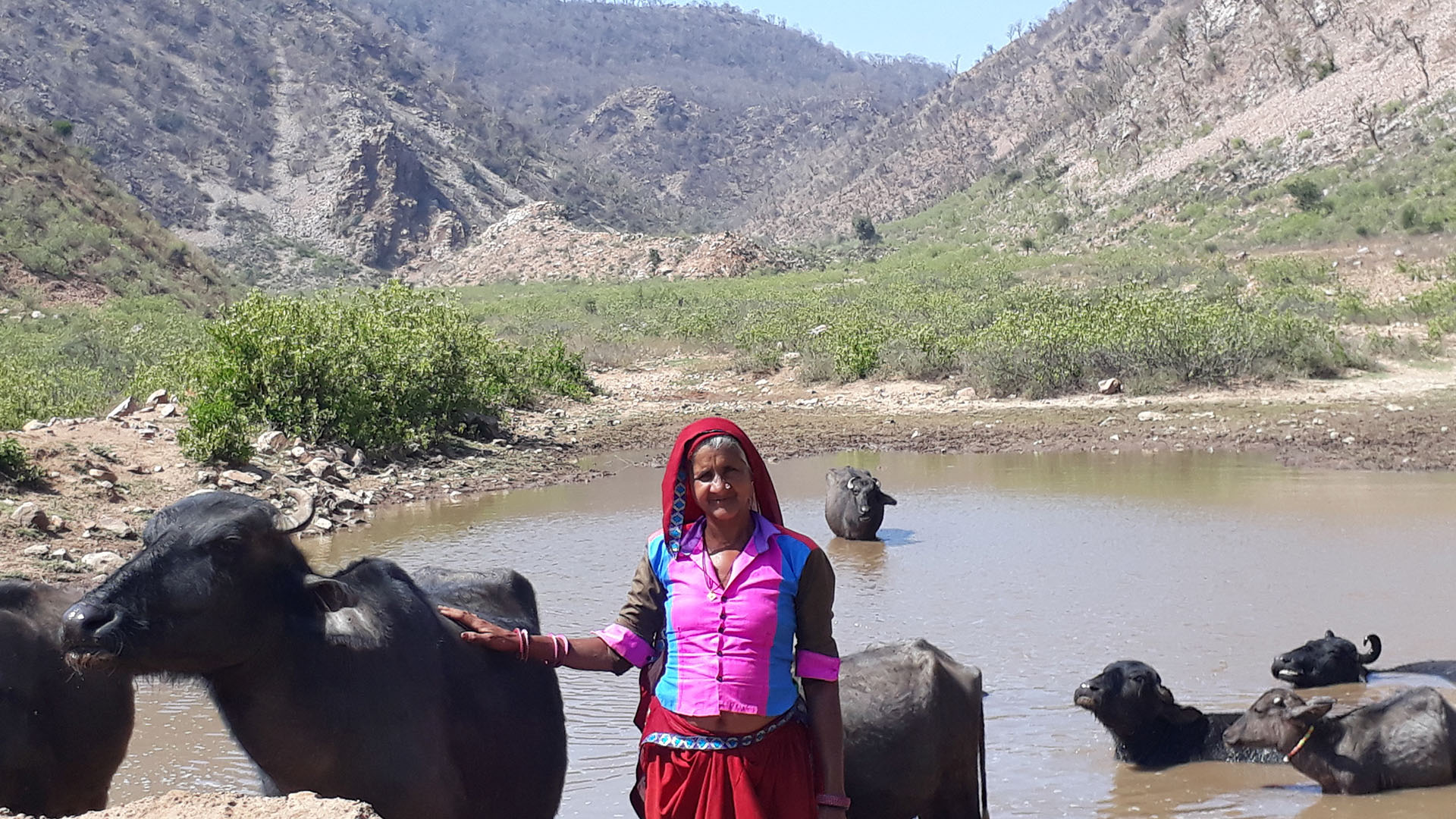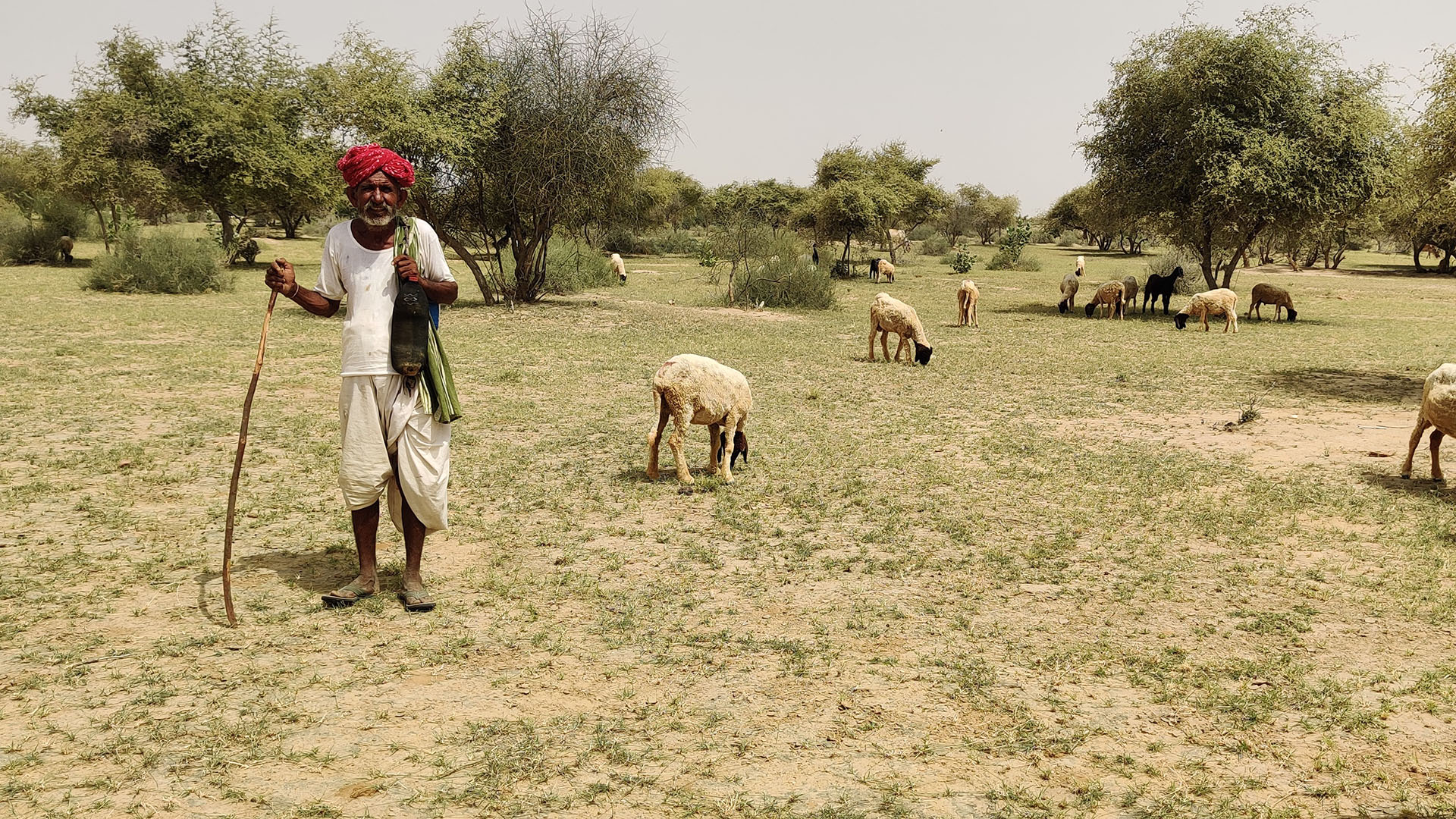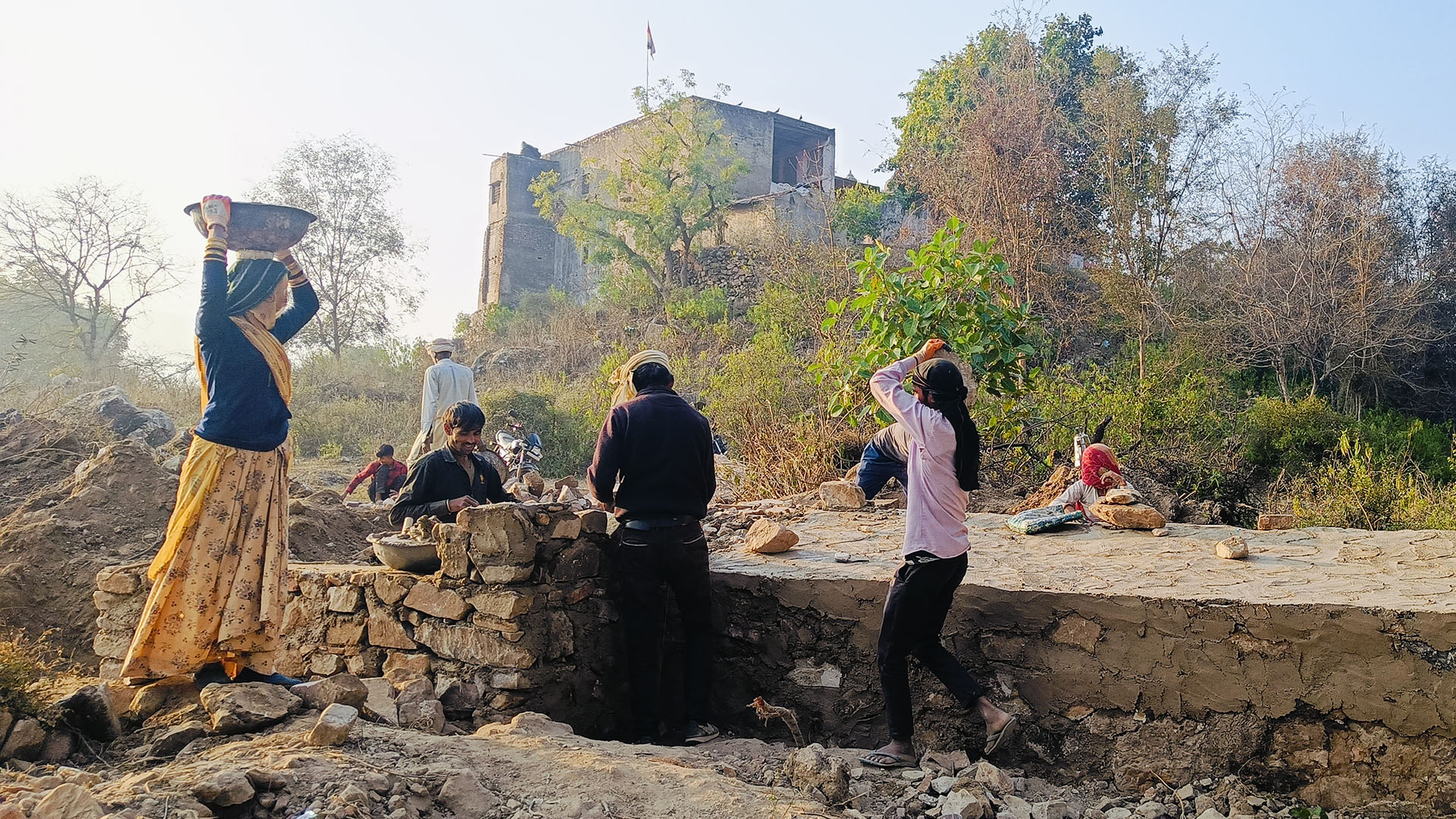Orans are sacred groves—community-conserved woodland areas around temples or shrines dedicated to lokdevta (folk deities), saints, and local heroes in Rajasthan, India
First published on 01/28/2025, and last updated on 02/14/2025
Written by Aman Singh and J.P. Singh of Krishi Avam Paristhitiki Vikas Sansthan (KRAPAVIS)
Orans are sacred groves—community-conserved woodland areas around temples or shrines dedicated to lokdevta (folk deities), saints, and local heroes in Rajasthan, India. The term derives from the Sanskrit word ‘Aranya,’ meaning a patch of forest. Ecologically, orans are unique habitats that support various native wildlife and plant species, functioning as natural silvopastoral systems and grazing grounds for both wildlife and livestock of pastoral communities. As Community Conserved Areas, orans are crucial in preserving biodiversity, promoting sustainable water management, and supporting community-driven ecological regeneration.
All orans have historical, cultural, and archaeological values and significance. They hold significant spiritual and cultural importance, contributing to local communities’ mental and physical well-being. Furthermore, they serve as a crucial buffer against extreme climatic conditions, helping to mitigate the impacts of climate change in the region.
The area covered by an oran can range from a few hectares to several hundred hectares. For example, the Bhadariya Mata Oran in Jaisalmer district spans 17,821 hectares.
Water bodies within the orans, such as Talab (pond), Nadi (small pond), open wells, and streams, are crucial water resources for livestock and wildlife. In the Thar desert, some orans have ancient goverdhan/ shilalekh (petrograph) near water bodies.
Orans serve as centers of socio-religious activity for local communities, with each oran typically centered around a temple or shrine dedicated to its local deities or saints. Festivals and fairs are held annually, often on specific dates, to honor these sacred places. In some orans, community members observe the tradition of performing parikrama (circumambulation) around the groove. These ritualistic events are, at the same time, faith practices and opportunities to educate the younger generation about oran traditions and cultural practices. The communities follow long-established norms set by elders, such as prohibiting cutting green trees within the orans. It is widely believed that the deity associated with the oran administers paracha (punishment) to those who violate these sacred rules.
Orans have been a vital life support system for local communities, sustaining them for centuries. These sacred sites provide essential grazing grounds for livestock, central to local peoples’ sustenance, livelihoods, and economy. Communities also rely on orans for non-timber forest products such as food, fodder, fiber, medicinal plants, gums and resins, honey, fuel, and construction materials.
Plant resources within the oran ecosystem are vital for both wildlife and livestock. The shrubs and trees within the orans provide essential shelter, offering refuge and protection to various species. Many trees, shrubs, and grasses serve as nesting sites for wildlife, underscoring their role in creating safe breeding grounds. Additionally, certain shrubs and trees host beehives, further enhancing the biodiversity of the ecosystem and supporting pollination efforts for nearby agricultural fields.
Orans, particularly the Thar Desert, are rich in floral and faunal diversity. They provide a critical habitat for several wildlife species, including the critically endangered Great Indian Bustard (Ardeotis nigriceps) and threatened plant species like guggal (Commiphora wightii). Additionally, some orans support key tree and shrub species populations, making them ideal sites for in-situ conservation of genetic resources.
It is crucial to document the Indigenous traditional knowledge of herders who manage animal grazing in orans. The herders possess a wealth of experience and have an intimate understanding of the orans’ historical and current biodiversity and the resources available for grazing.
Conservation of orans helps manage ecosystems, enhances tourism potential, and creates employment opportunities, thereby supporting the livelihoods of local communities.
Orans face several threats, including the erosion of socio-cultural norms and encroachment for settlement, agriculture, and other uses. Several orans are not recorded in the revenue land records. Additionally, excessive grazing, browsing pressure, and the spread of invasive species like Prosopis juliflora further degrade these sacred lands. The understorey perennial grass cover has been significantly degraded due to the intense grazing pressure.
Krishi Avam Paristhitiki Vikas Sansthan (KRAPAVIS), based in Alwar, Rajasthan, is dedicated to surveying, studying, and restoring Orans across the Aravalli and Thar Desert regions. In 2021, KRAPAVIS published “Oran Atlas of Aravallis of Rajasthan.” Building on this work, its 2024 publication, “Orans of Thar-A Passage to Jaisalmer,” marks the culmination of nearly two years of intensive field research and mapping of hundreds of orans in Jaisalmer district, located in the heart of the Thar Desert. This comprehensive study explores these sacred sites’ physical characteristics, biodiversity, threats, ownership, governance, ecosystem services, and cultural significance.
KRAPAVIS is engaged in several conservation efforts to protect and revive the Orans: (i) revitalizing traditional water storage systems within the Orans to provide water for both village livestock and wildlife; (ii) enhancing vegetation cover by removing invasive species like Prosopis juliflora, planting native species suited to the habitat, and reseeding with perennial grasses; (iii) raising community awareness, particularly among the younger generation, to encourage their involvement in Oran activities; and (iv) advocating for improved management and protection of Orans. Through these initiatives, KRAPAVIS seeks to ensure orans’ continued ecological and cultural significance for future generations.
Edited by Mohammad Arju and Chris Jarrett




